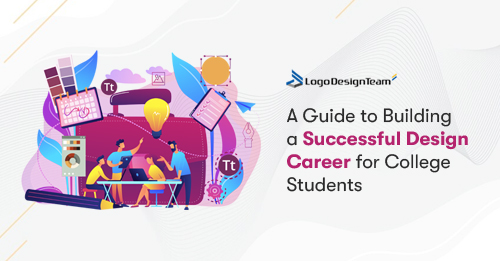Building a successful design career for college students involves a combination of formal education, practical experience, and networking. Start by enrolling in a reputable design program that offers a solid foundation in design principles, software proficiency, and creative thinking. Participating in internships and freelance projects can provide valuable real-world experience and help build a strong portfolio. Networking with professionals in the industry through events, workshops, and online platforms is crucial for gaining insights and job opportunities. Managing the demands of coursework and building a career can be challenging, so some students opt to pay UKWritings to do assignment. UKWritings.com provides academic writing help, allowing students to focus more on gaining practical experience and making connections in the design field while ensuring their academic requirements are met.
Understanding the Design Industry
Before we dive into the specifics of building a successful design career, it’s essential to understand the landscape of the design industry. Design plays a crucial role in various sectors, from advertising and marketing to technology, fashion, and beyond. As a designer, you have the power to shape the way people perceive and interact with products, services, and experiences. The design industry is highly competitive, but it also offers a wealth of opportunities for those who are passionate, skilled, and adaptable. Successful designers are not only creative but also possess strong problem-solving abilities, attention to detail, and a deep understanding of user needs and behaviors.
Reading a UKWritings review can offer college students valuable insights into how this service can help manage academic workload, allowing them to focus more on building a successful design career.
Developing Essential Skills
To thrive in the design industry, you’ll need to cultivate a diverse set of skills. Here are some essential skills that every aspiring designer should develop:
1. Technical Skills: Proficiency in industry-standard design software and tools is a must. Familiarize yourself with programs such as Adobe Creative Suite (Photoshop, Illustrator, InDesign), Sketch, Figma, and others relevant to your chosen design discipline.
2. Creative Thinking: Design is all about creativity and innovation. Develop your creative problem-solving skills by exploring different techniques, such as brainstorming, mind mapping, and ideation exercises.
3. Communication and Collaboration: As a designer, you’ll often work in teams or collaborate with clients. Strong communication skills, both written and verbal, are crucial for conveying your ideas effectively and understanding client requirements.
4. User Experience (UX) and User Interface (UI) Design: In today’s digital age, understanding UX and UI principles is essential for creating intuitive and user-friendly designs across various platforms and devices.
5. Adaptability and Continuous Learning: The design industry is constantly evolving, with new technologies, trends, and best practices emerging regularly. Embrace a growth mindset and be willing to adapt and learn new skills throughout your career.
Building Your Portfolio
Your portfolio is your most valuable asset as a designer. It showcases your skills, creativity, and unique design style to potential employers or clients. Start building your portfolio early and continuously update it with your best work.
1. Choose a Focused Niche: While it’s great to have a diverse range of projects in your portfolio, consider focusing on a specific niche or design discipline that aligns with your career goals.
2. Tell a Story: Each project in your portfolio should tell a compelling story, highlighting the design process, challenges faced, and the solutions you implemented.
3. Showcase Your Process: Employers and clients are often interested in understanding your design process, so include sketches, wireframes, and other artifacts that demonstrate your thought process.
4. Tailor Your Portfolio: Customize your portfolio to suit the specific job or client you’re applying for, highlighting relevant projects and skills.
5. Present Your Work Professionally: Invest time and effort into presenting your portfolio in a visually appealing and organized manner, whether it’s a physical portfolio or an online website.
Networking and Building Connections
Networking is a vital aspect of building a successful design career. Connecting with professionals in the industry can open doors to job opportunities, mentorship, and valuable insights. Additionally, refining your job interview tips can help you confidently present your portfolio, communicate your design process effectively, and leave a strong impression on potential employers.
1. Attend Design Events and Conferences: Participate in design events, conferences, and meetups in your local area or online. These events provide excellent opportunities to network with other designers, learn about industry trends, and potentially find job or freelance opportunities.
2. Leverage Social Media: Platforms like LinkedIn, Behance, Dribbble, and Instagram are powerful tools for showcasing your work, engaging with the design community, and connecting with potential employers or clients.
3. Join Professional Organizations: Consider joining professional organizations related to your design discipline, such as AIGA (American Institute of Graphic Arts) or IxDA (Interaction Design Association). These organizations offer networking events, resources, and opportunities for professional development.
4. Seek Mentorship: Find an experienced designer or professional who can serve as a mentor. A mentor can provide valuable guidance, feedback, and support as you navigate your career path.
Continuing Education and Professional Development
The design industry is constantly evolving, and it’s essential to stay up-to-date with the latest trends, technologies, and best practices. Embrace a lifelong learning mindset and invest in your professional development.
1. Take Online Courses and Tutorials: Explore online learning platforms like Skillshare, Udemy, or Coursera to expand your knowledge and skills in areas relevant to your design career.
2. Attend Workshops and Seminars: Look for workshops, seminars, or webinars offered by industry professionals, educational institutions, or professional organizations to gain specialized knowledge and hands-on experience.
3. Read Industry Publications and Blogs: Stay informed by reading industry publications, blogs, and online resources that cover design trends, techniques, and case studies.
4. Participate in Design Challenges and Competitions: Engage in design challenges and competitions to push your creative boundaries, gain exposure, and potentially win prizes or recognition.
Successful Design Career Statistics for College Students
According to U.S. Bureau of Labor Statistics, Dribbble Hiring Survey 2022:
| Projected Job Growth for Graphic Designers (2020-2030) | 3% (slower than average) |
| Median Annual Salary for Graphic Designers (May 2021) | $50,710 |
| Percentage of Graphic Designers who are Self-Employed | 22% |
| Percentage of Designers with a Bachelor’s Degree | 63% |
| Top Industries Employing Graphic Designers | Advertising, Publishing, Specialized Design Services |
| Percentage of Designers with Skills in UI/UX Design | 67% |
| Percentage of Designers with Skills in Prototyping | 53% |
| Percentage of Designers with Skills in Animation | 42% |
Building a successful design career as a college student requires a combination of passion, dedication, and strategic planning. By developing essential skills, building a strong portfolio, networking, and embracing continuous learning, you can position yourself for success in the dynamic and rewarding world of design. Remember, the journey may have its challenges, but with perseverance and a commitment to excellence, you can turn your design dreams into reality.




